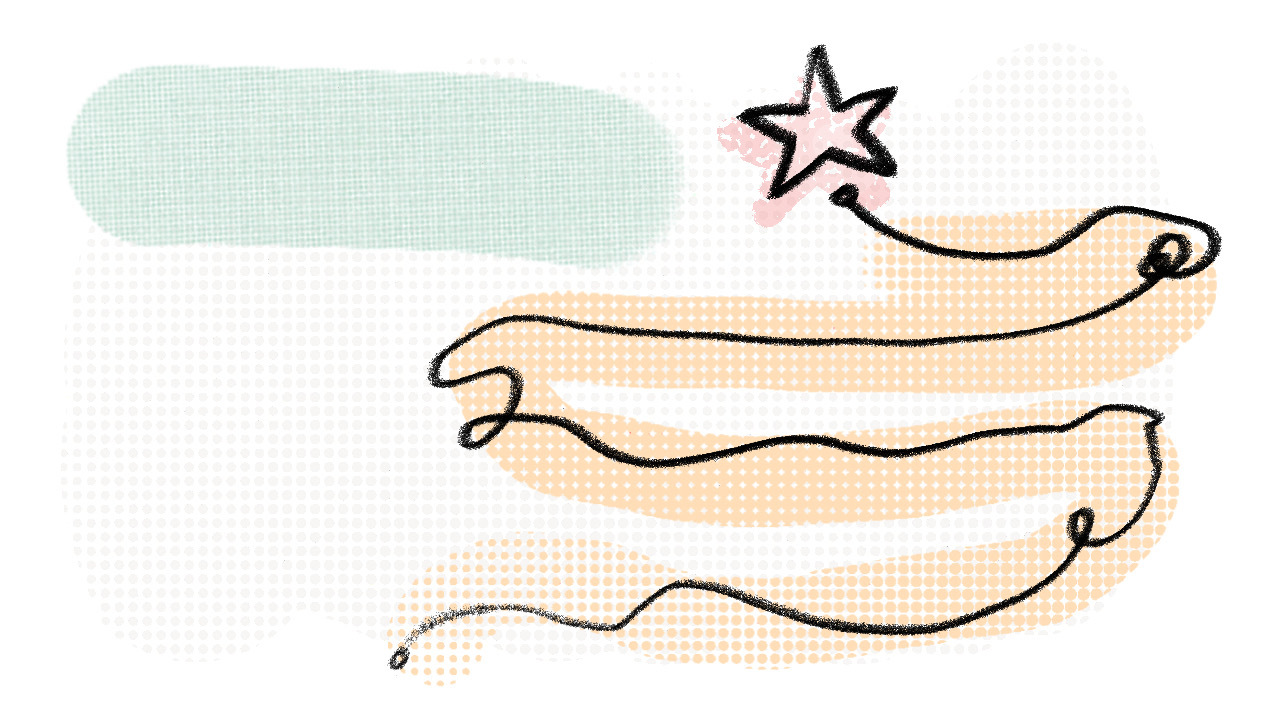Should you become a design manager?

Navigating career paths is one of the most challenging parts of being a designer. If you’ve got a good manager, you probably discuss your growth plan and opportunities several times each month. I’ve thought about this a lot over my 11+ years as a full-time digital designer; below are my opinions about deciding between the individual contributor (IC) and manager life.
Catt, why do you care so much about this?
Before I dig into my advice, I want to share some context. This topic is very personal to me and I think about it all the time! Hopefully it can help you understand why being intentional about this part of your design career is important.
In 2016, I decided to try design management. While I had no access to formal manager training, being a Black woman in tech taught me what not to do and what a good manager should be like. I started by co-managing an intern with another person, which went well, so I then moved to hire and manage two interns of my own.
While I was excited to try managing two people by myself, I also still had a full plate of senior design work to deliver. As one might expect, balancing individual contributor responsibilities with helping my interns learn to be a part of the workforce was extremely stressful. I also learned that being a middle manager meant solving people challenges with the Human Resources team more often than I’d ever in my career thus far — from simple hiring matters to unsuccessfully advocating for my reports and having to deliver bad news.
Through my half-year experiment, I realized that I like leadership and mentorship, but not middle management. From that moment onward, I decided to aspire to become a lead individual contributor. Luckily, I witnessed examples first-hand and have seen designers at other organizations excel in these kinds of roles.

Charting your path
Curious about whether to become an IC lead or a manager? Let’s explore the major differences. FYI: my opinions about these roles are centered around my experience at 200+ person companies. I strongly believe that roles can (and likely must) be blurred at smaller companies with less hierarchy.
Design leads
Leads are more likely to be responsible for the visionary design thinking of a specific, large product area. They are individual contributors who do hands-on design work while also directing the work of other designers. They don’t manage other ICs, but they do mentor designers and model excellence.
Design managers
Managers are ideally focused on growing the skills of their designers and building great teams. Their work likely involves looking across product areas and finding opportunities for their direct reports. They set clear expectations for output and growth, create processes that help teams become more effective, and help reports move toward career goals that align with those expectations.
How to know if management is right for you
Once you reach a senior level, you may have the chance to take a shot at management. Before you say yes, consider the reasons behind wanting to accept the role.
Reasons not to become a manager
Society encourages us to level up as quickly as possible, but it shouldn’t be at the expense of human beings. Three reasons you should not become a manager are:
- To get a promotion. Management isn’t a promotion — it’s a lateral move combined with an entirely new job; you’ll likely need time to adjust and won’t be great at it right away. This can affect your your confidence levels which may ultimately impact how you show up to manage your reports.
- To take credit for a larger share of work. While you may be able to have a larger impact on your organization and the people in it, you won’t be directly responsible for output anymore. Part of a manager’s job is to empower and lift up their team. If you try to take credit for the work of your reports, you’re not being a great manager.
- Having the power to do things “your way”. While you will have some leeway to do what you want, you’ll also be working to meet expectations from a variety of stakeholders and your reports will feel micromanaged if you’re too controlling.
Reasons to become a manager
You’d be an amazing manager if you…
- Love helping people grow in their careers.
- Don’t need to do hands-on design work often (or ever again).
- Are excited by the idea of designing and growing a team of people who are different from you.
- Have the availability to take on emotional labor and want to spend energy making others’ lives better.
In other words, please become a manager if you actually care about cultivating the well-being of others. Don’t become a manager if you only want to better yourself. The latter will result in a lot of harm and trauma for your reports.

Where do we go from here?
After my intern experiment, I realized middle management wasn’t a fit for me. While some of the work was extremely fulfilling and I grew my skillset in ways that later benefited me, I was also lacking the support necessary and missed doing full-time hands-on design work. Realizing I had no way to progress and little leverage to change that without leaving the company, I moved on and eventually landed at a place that better supported the vision I had for myself. Working at Asana has been fulfilling because I’ve been able to work with other very senior designers and leaders who support a continuous, long-term growth path for ICs.
Most senior design leaders shift between IC work and management roles throughout their careers. If you’re a senior designer, I highly recommend trying to manage an intern or junior designer for 3–6 months to see if it suits you. Take caution, though: while your career decision can be undone later if you don’t find it fulfilling, you will impact a human being’s life.
It’s quite possible that I’ll become a manager again one day. However, I check in with myself every few months and still feel like IC leadership is the best path for me. And I’m not alone; lead product design roles are becoming more and more popular at mid-size and large-scale companies. Growing companies can benefit greatly from splitting their senior design pathways into separate IC and management tracks.
Design career resources
If you’re exploring whether to become an IC leader or a manager, you have options. I recently spoke at an Asana Design panel, Designing Your Own Career, about this very topic! I highly recommend The Making of a Manager for those who are curious about design management. If your organization doesn’t have IC lead roles defined yet, you can work with them to bring your vision to life — check out Staff Design’s Resources for inspiration.
Upcoming talks
-
Staff designer: Grow, influence, and lead as an individual contributor
At some point in your career, you'll likely have to choose between senior individual contributor (IC) and design management roles. But what if you don't want to manage others? What if you’d rather continue as an expert contributor? In this talk, we’ll take a deep dive into staff/principal designer roles—a combination of team leadership and in-the-pixels design work—all without any direct people management. Learn how you can advocate for, grow into, and succeed in such IC leadership roles.
Want to talk?
Got feedback, looking to suggest a future writing topic, or want to invite me to speak at your organization? Send me a message and I'll get back to you as soon as possible!